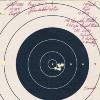remingtonfan
Member
Hi Guys,
I am trying to understand something here so I hope you help me out.
For the sake of discussion, assume I am talking about 308 ammo.
Now bascially if you had to choose ammo and you had a range of brands to choose from, why would you choose it, and why is there such differences between manufactors for the same calibre in terms of accuracy?
The reason i ask the question is I am trying to justify the cost differences between brands.
I am trying to understand something here so I hope you help me out.
For the sake of discussion, assume I am talking about 308 ammo.
Now bascially if you had to choose ammo and you had a range of brands to choose from, why would you choose it, and why is there such differences between manufactors for the same calibre in terms of accuracy?
The reason i ask the question is I am trying to justify the cost differences between brands.






